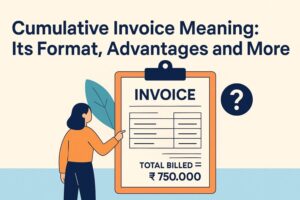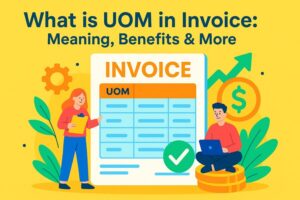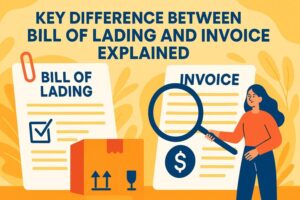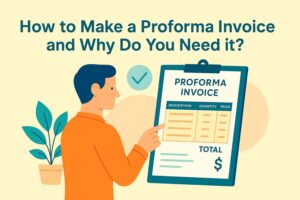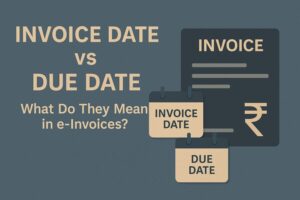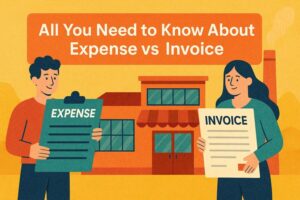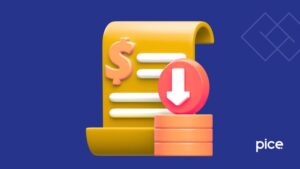What Is the Difference Between Proforma Invoice and Purchase Order?
- 6 Nov 25
- 8 mins

What Is the Difference Between Proforma Invoice and Purchase Order?
- Proforma Invoice: What It Means
- Purchase Order: What It Means
- Difference Between Proforma Invoice and Purchase Order
- Inclusions in a Proforma Invoice
- Inclusions in a Purchase Order
- How to Create a Proforma Invoice or Purchase Order Using Templates?
- When to Issue a Proforma Invoice?
- When to Use Purchase Orders?
- Advantages of a Proforma Invoice
- Advantages of Purchase Orders
- Conclusion
Key Takeaways
- A proforma invoice is a preliminary bill or quotation from the seller, while a purchase order (PO) is an official request from the buyer confirming the purchase.
- A proforma invoice is not legally binding, whereas a purchase order becomes legally binding once accepted by the seller.
- Sellers issue proforma invoices before the sale to provide estimates; buyers issue purchase orders after deciding to buy to formalize the deal.
- A proforma invoice contains estimated prices, quantities, and costs for negotiation; a purchase order contains finalized order details, delivery terms, and buyer/vendor information.
- Proforma invoices help with transparency and trust-building, while purchase orders help with record-keeping, budgeting, and legal protection in business transactions.
Suppose you went furniture shopping and are interested in making a purchase. There, the store will first provide you with a proforma invoice, which works like a rough estimate showing costs, quantities and prices. It will help you decide whether to proceed or not. Once you are ready to buy, you issue a purchase order, which is the formal confirmation of the deal.
Simply put, the proforma invoice is the proposal while the purchase order is the official go-ahead. Notably, a proforma invoice is different from a commercial invoice, final sales invoice or tax invoice.
Let us learn what they mean in detail and the key difference between proforma invoice and purchase order here.
Proforma Invoice: What It Means
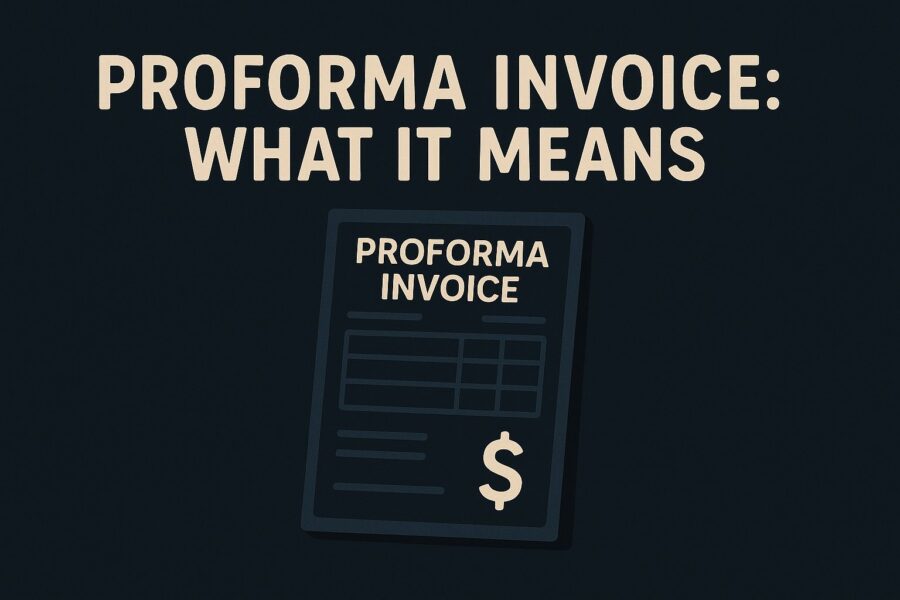
A proforma invoice is an initial bill of sale that sellers send to buyers. This invoice includes details of goods and services, their unit prices, quantities, description and estimated total amount inclusive of taxes and shipping costs.
As a result, a proforma invoice does not highlight accounts payable and accounts receivable. Moreover, it is not a payment request or binding invoice. However, a proforma invoice is the initial step of invoice processing.
For instance, if a buyer, Mr A, orders 3 chairs and 2 tables, seller Mr B can send a proforma invoice highlighting the unit price, quantities and total in the following way:
3 chairs at ₹500 each = ₹1,500
2 tables at ₹1,000 each = ₹2,000
Sub total = ₹1,500 + ₹2,000 = ₹3,500
Taxes at 18% = ₹3,500 * 18% = ₹630
Total Amount Payable = ₹3,500 + ₹630 = ₹4,130
Buyers and sellers can negotiate on the order and payment terms based on a proforma invoice to settle an agreement. However, a proforma invoice is not a legally binding document.
Purchase Order: What It Means
A purchase order is a request that buyers send to sellers to order goods and services. It becomes a legally binding document once the seller accepts a purchase order. As a result, the information in a purchase order needs to be accurate.
Errors in this document can result in financial losses for the buyer as a seller prepares an order based on this document. For instance, if Mr X, a buyer, plans to order 5 chairs and 3 tables, he needs to mention it accurately.
Erroneous mention of 3 chairs and 6 tables will lead to financial losses for Mr X. The seller will accept an order accordingly, for which Mr X will have to pay the price.
Here is an example to show how the buyer might incur a financial loss:
Price of a chair ₹200
Price of a table ₹1,000
Planned order = 5 chairs + 3 tables
Estimated cost of planned order = 5 * ₹200 + 3 * ₹1,000 = ₹4,000
Incorrect order placed = 3 chairs and 6 tables
Estimated cost of incorrect order = 3 * ₹200 + 6 * ₹1,000 = ₹6,600
Thus, Mr X will have to pay ₹6,600 - ₹4,000 = ₹2,600 more for an incorrect order, resulting in a financial loss. Further, the incorrect order placed by Mr X will not help him cater to his needs as he needs more chairs and lesser tables, as per the planned order.
Difference Between Proforma Invoice and Purchase Order

| Proforma Invoice | Purchase Order |
| Sellers send it to buyers | Buyers send it to sellers |
| Preliminary bill of sale | Entails order details |
| Not a legally binding document, can be amended | Legally binding document after the seller accepts |
| As these are not final bills, no payment is required | Buyers have to pay for purchase orders after commodity delivery |
| These invoices contain negotiable and estimated prices. | A buyer sends a purchase order after agreement on the prices of goods and services. |
| Proforma invoices clarify prices to help buyers make informed purchase decisions. | It helps track purchase records and financial transactions. |
Inclusions in a Proforma Invoice
To make a proforma invoice a valid document, you need to include the following details as a seller:
- Date of issue
- Invoice number
- Buyer’s contact details
- Your contact details
- Description of goods and services
- Quantity of each good and service
- Prices of goods and services
- Shipping costs
- Taxes and additional fees, if applicable
- Total amount outstanding
Inclusions in a Purchase Order
As a purchase order is a legally binding document, the buyer should include all the details accurately. Here's what needs to be mentioned:
- Purchase order number
- List of goods and services
- Product quantities or service quantities
- Order prices
- Name of the vendor
- Vendor address
- Billing address
- Shipping address or delivery address
- Specific delivery terms and conditions
- Delivery date
How to Create a Proforma Invoice or Purchase Order Using Templates?
Multiple templates are available online to help buyers and sellers create proforma invoices and purchase orders. Using the right template simplifies the creation process, ensuring the validity of the document. Here is how to create these documents using templates:
Step 1: Collect relevant information about the seller/ buyer, goods and services.
Step 2: Choose an online template that includes the necessary parameters.
Step 3: Incorporate the information in the chosen template.
Step 4: Review the details for accuracy and prepare your proforma invoice or purchase order.
When to Issue a Proforma Invoice?
Prior to Sale
As a seller, you need to issue a proforma invoice before the actual sale of goods and services. However, you need to issue it after initial discussions with the concerned buyer.
To New Customers
If you are a seller engaging in a transaction with a buyer for the first time, you can use this invoice. This helps gain trust with the buyer based on the details of a proforma invoice.
To Set Expectations
As a seller, you can set expectations for your buyer using a proforma invoice. Buyers can know about the estimated prices, shipping cost and additional fee for ordered goods or services from this invoice.
As e-Waybill
Sellers often use this invoice as an e-way bill for transportation. This helps them provide estimates of goods and services during transportation. Sellers involved in international trade use it for customs clearance.
When to Use Purchase Orders?
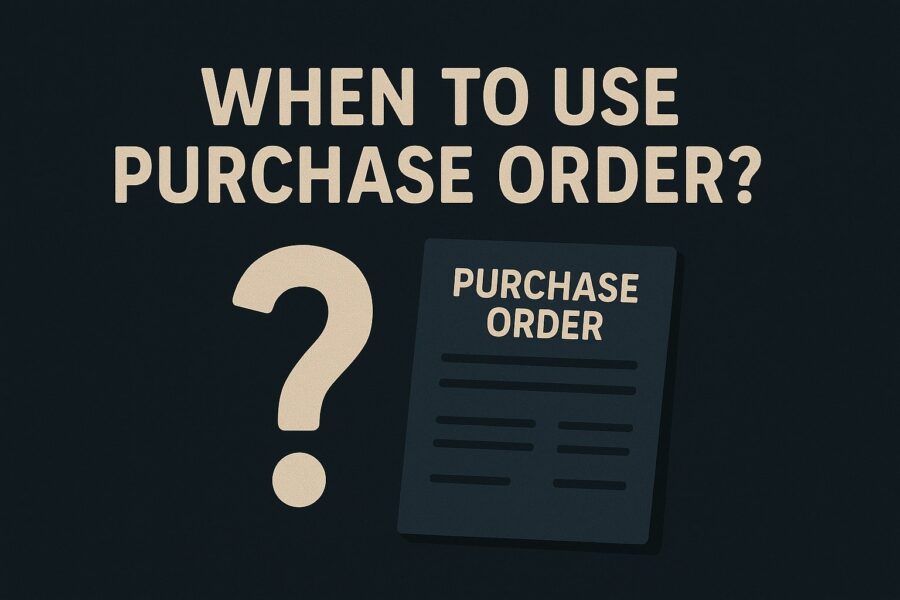
To Formalise a Purchase
Buyers can use a purchase order to formalise a purchase request. This helps track orders from different departments of their company.
For Inventory Audit
On order fulfilment, companies can seamlessly use the document to manage inventory audit and transactions.
To Track Expenditure
Each purchase order entails a unique number, which helps track orders against receipts. Thus, businesses can track what they receive against what they ordered.
For Order Budgeting
Based on the ordered items in a purchase order, companies can plan their budget. They can effectively know the ordered items and their prices to set a financial plan.
For Legal Status and Protection
As a purchase order is a legal document, buyers and suppliers can use it as evidence in case of disputes.
Advantages of a Proforma Invoice
- Sellers and buyers can use a proforma invoice to know the estimated prices of commodities.
- As a seller, you can negotiate with the buyer based on the terms and conditions of this invoice.
- Buyers can make amendments to their order based on this preliminary bill.
- It enhances transparency between buyers and sellers by highlighting payment processes.
- A proforma invoice improves visibility of transaction terms and conditions.
💡If you want to streamline your payment and make GST payments via credit, debit card or UPI, consider using the PICE App. Explore the PICE App today and take your business to new heights.
Advantages of Purchase Orders
- As purchase orders maintain purchase records, such as details of raw materials, cost of goods or services, it helps buyers and sellers avoid disputes and conflicts.
- It is a legally valid document that sellers and buyers can use in procurement processes.
- A purchase order helps optimise inventory to prevent stockouts and disruption in the production process.
- It helps manage expenses efficiently with a detailed list of goods and services available.
- A purchase order helps in budgeting and financial planning with detailed prices and quantities of goods or services available.
Conclusion
The main difference between proforma invoice and purchase order lies in their legal aspect. A purchase order is a legally binding document, while a proforma invoice is not. However, a proforma invoice still plays an important role in building trust and transparency between buyers and sellers. For instance, if you are a seller dealing with a new customer, issuing a proforma invoice helps share clear estimates of goods or services upfront.







